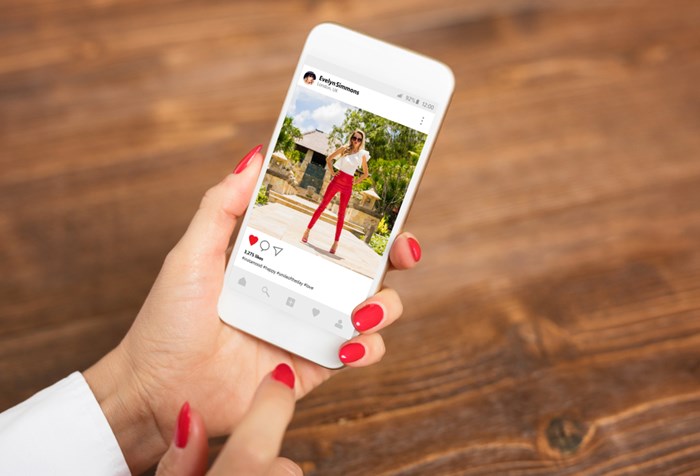Social Media Focus: The tricky prospect of sharing before-and-after images on Instagram

According to a July 2019 survey, Instagram is now used by an estimated 500 million people on a daily basis – and 52 percent of those users are female. These users are our patients. Instagram is a visual platform, and an ideal one for plastic surgeons to showcase their results. The question remains, however: How you can share your cosmetic and reconstructive results responsibly, ethically and respectfully?
I've been active on Instagram since December 2015 through my @drkarenhorton account and I've grown my follower-count to more than 18,000. Although I previously tried sprinkling-in some before-and-after images to my page, they seemed out of place with my regular "day in the life of a board-certified plastic surgeon" posts. Earlier this year, I launched a second "vertical" @drkarenhortonbeforeandafters account to share a before-and-after case each day, with a detailed description of my patient's surgical journeys. My goal was to display my surgical results and to encourage followers to visit my website to see more.
What did I learn? Several things. First, you have to appreciate that female nipples, pubic hair and buttock creases need to be obscured. You can land in "Facebook jail" for inadvertently posting "inappropriate content" via a reconstructed nipple (local flap and medical tattoo), an uncovered buttock crease or intraoperative images with areola tissue showing. You're alerted to this violation by a message detailing cumulative penalties per offence (24 hours, three days, one week or permanent removal of your page). It's important to understand that what we find acceptable and see every day as plastic surgeons isn't always considered appropriate by social media platforms.
Instagram is owned by Facebook, so it has parallel policies when it comes to displaying body parts. Showing a female nipple is a misdemeanor, while showing enlarged male nipples in gynecomastia before-and-after cases, transgender nipples or an actively breast-feeding nipple, even in a suggestive pose, is acceptable. Although the #freethenipple campaign promotes equality of showing women's nipples or reconstructed nipples with gender equality on social media, it hasn't made sharing these photos widely acceptable.
Therefore, how do plastic surgeons display their results without violating these policies or offending viewers? Placing various emojis over these body parts via a smartphone app or third-party desktop program is common – but even this necessitates caution. A July 2019 Facebook/Instagram policy update targeted particular emojis that could be interpreted as sexually suggestive, including the peach emoji (over female buttocks) and the eggplant (over male genitalia). Accounts can be flagged or shut down for violating this policy. The ASPS Social Media Subcommittee is closely following this development and closely scrutinizing its own social media posts for potential violations.
For social media sharing of my results, I created circles, triangles and rectangles featuring my initials and brand colors to cover up body parts as needed. I add a clear title, my name and practice information to each post that acknowledges the work is mine and discourages reposting by others as their own (theft). I post my before-and-after photos mainly on my page, rather than in Instagram stories, which are featured as the small circles at the top of your home feed. The stories function copied Snapchat and encourages daily posts to which you can add text, emojis, stickers, location and time information, and tag others in.
Instagram stories have a less formal and curated feel than most home pages. Some users primarily view stories rather than scroll their home feed. Posting your cases in a story requires additional steps – and likely several posts per case for a detailed description and to allow viewers to take in all pertinent details. These posts disappear after 24 hours and are not visible on your page afterward. Therefore, they won't be viewed by all your followers, instead just capturing the attention of some Instagram users.
You need more than 10,000 followers on your account to activate the "swipe up" function – which will take viewers to a particular web link (such as the full case on your website without covering up nipples and pubic hair). It takes time to grow your page organically to this level, and you should never buy fake followers.
Finally, Instagram is gradually rolling-out the hiding of "likes" to everyone other than the account owner. How will this affect plastic surgeons? It may indeed level the playing field, as most of us don't have thousands of likes per post. It also will free-up posting times to when it's convenient, rather than trying to game when most users are online and to gain as many likes as possible.
Many businesses are focusing more on engagement per post rather than likes. If followers comment on your post, respond and continue the conversation. Be sure to remove all identifying features on before-and-after images, such as tattoos, jewelry or other body markings. It's also paramount that you have full consent to share patient images online. A sample consent form for social media sharing can be found at plasticsurgery.org.
Dr. Horton is a member of the Social Media Subcommittee and practices in San Francisco. You can find her online at drkarenhorton.com.